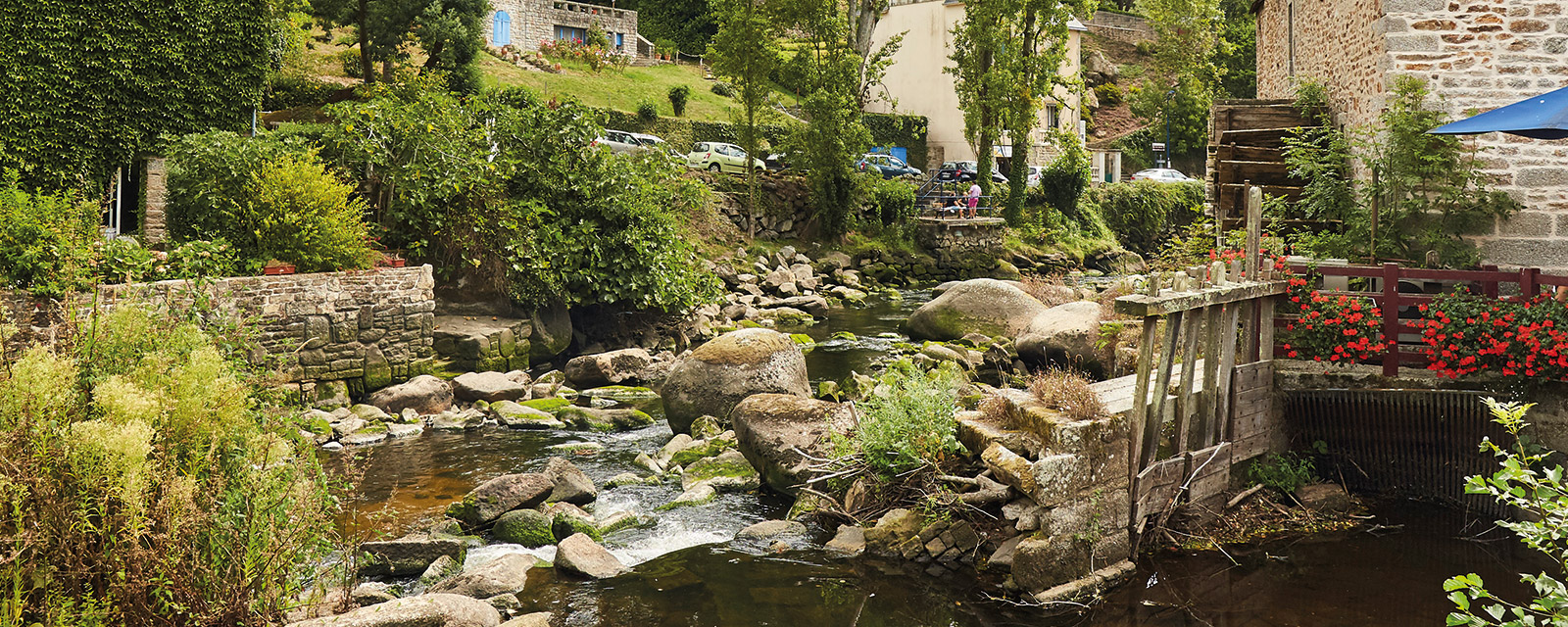
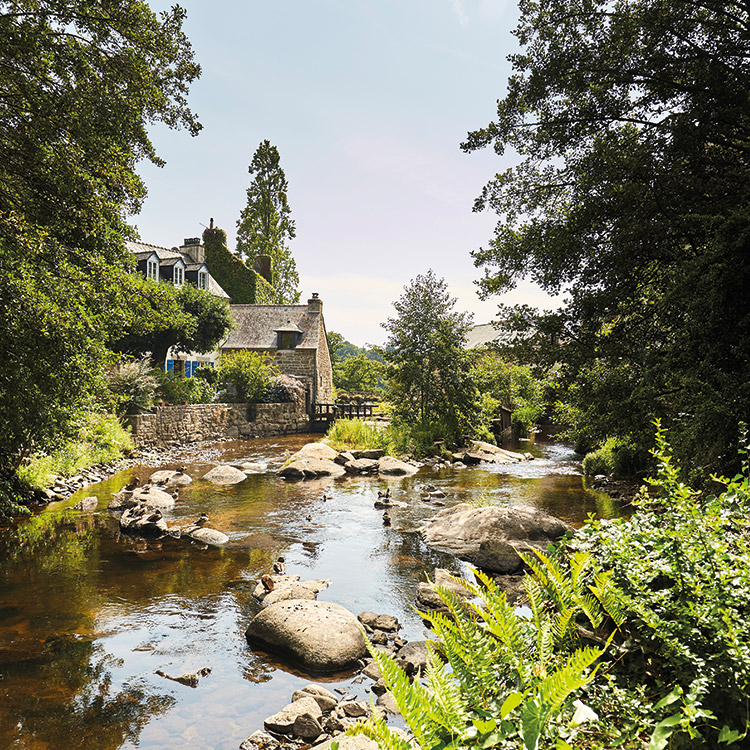
In Pont-Aven, way before the arrival of the painters, the astonishing concentration of mills was what made the town’s reputation. No less than 15 mills settled one after another along only two kilometers of river. Nowadays, memorial plaques mark the places where slipways, mill races and dykes used to be located.
One of Pont-Aven’s particularity was its concentration of mills in a limited area. The town was therefore nicknamed “Bro goz ar milinou” which means “the old land of mills”. Upstream and downstream of the main bridge, about fifteen mills were staggered.
Going downhill of the Montagnes Noires the Aven’s course is slowed by gigantic blocks of granite which form a natural barrier. Taking advantage of this ideal location, many mills established there and worked at full capacity until the beginning of the XXth century (the last one in activity closed in 1925). The stone works and ingenious layouts in the Aven composed by millraces, dykes, slipways… are a hydraulic system which is probably unique in Brittany.
Nowadays there is no longer any active mill left in Pont-Aven but there is a flour factory which still perpetuates the millers’ traditions.
In the town, along the Aven you will find wooden signs recalling the location of each mill and their story.
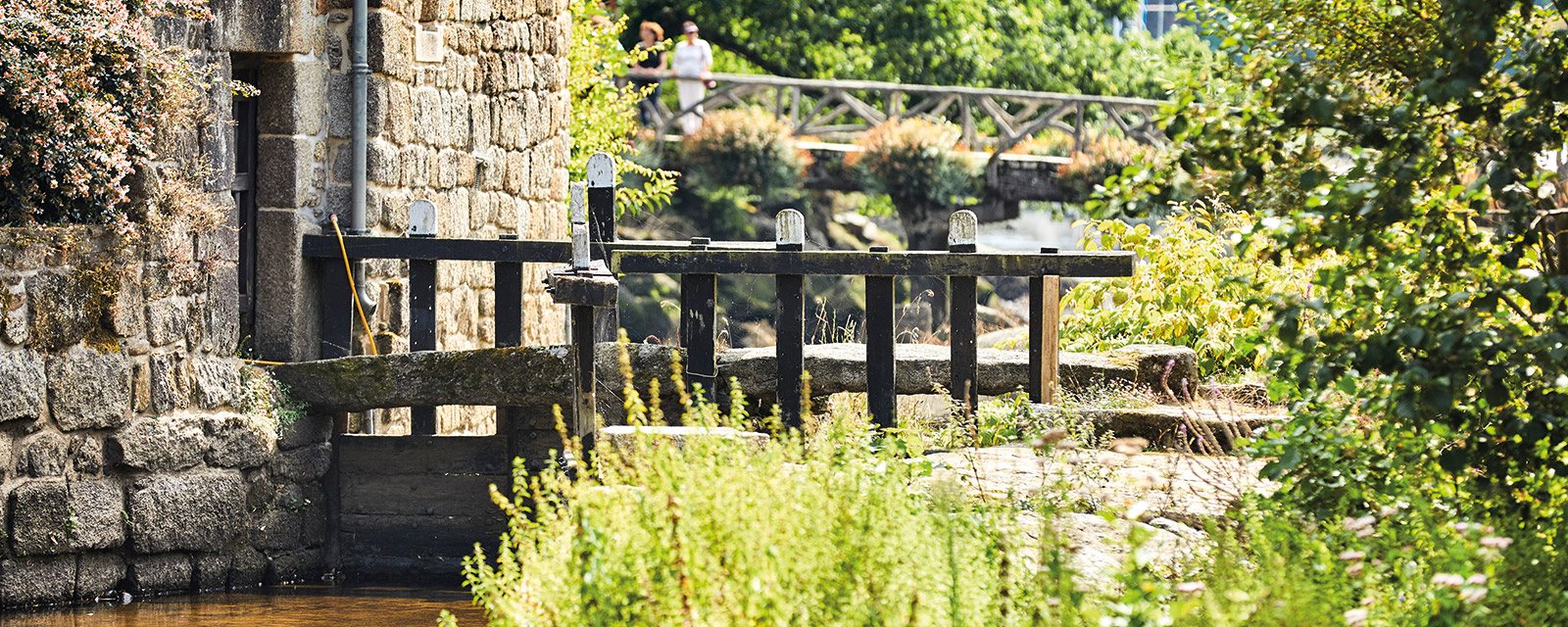
“Pont-Aven, town of renown, 14 mills, 15 homes”
The mill of the Haut Bois (n°1)
Also called Meil Coat Du, the “Mill of the black woods” dates back to 1724 as showned on the lintel of the doors. It belonged to the Lord of the Haut Bois. Its activity stopped in 1951. In 1959, its new owner installed a turbine in order to collect electricity.
The mill of the Plessis (n°2)
Its name comes from the Manor of the Plessis, a property from the Villemarqué family who also own the Bois d’Amour and the Trémalo Chapel. Located in the place called Mainguinis, a diversion canal which supplied the turbine is the only remain of the mill.
The New mill (n°3)
Located at the entrance of the Bois d’Amour its activity ceased in 1900. From 1899 to 1950 the town was lighted thanks to an electricity factory build on this site.
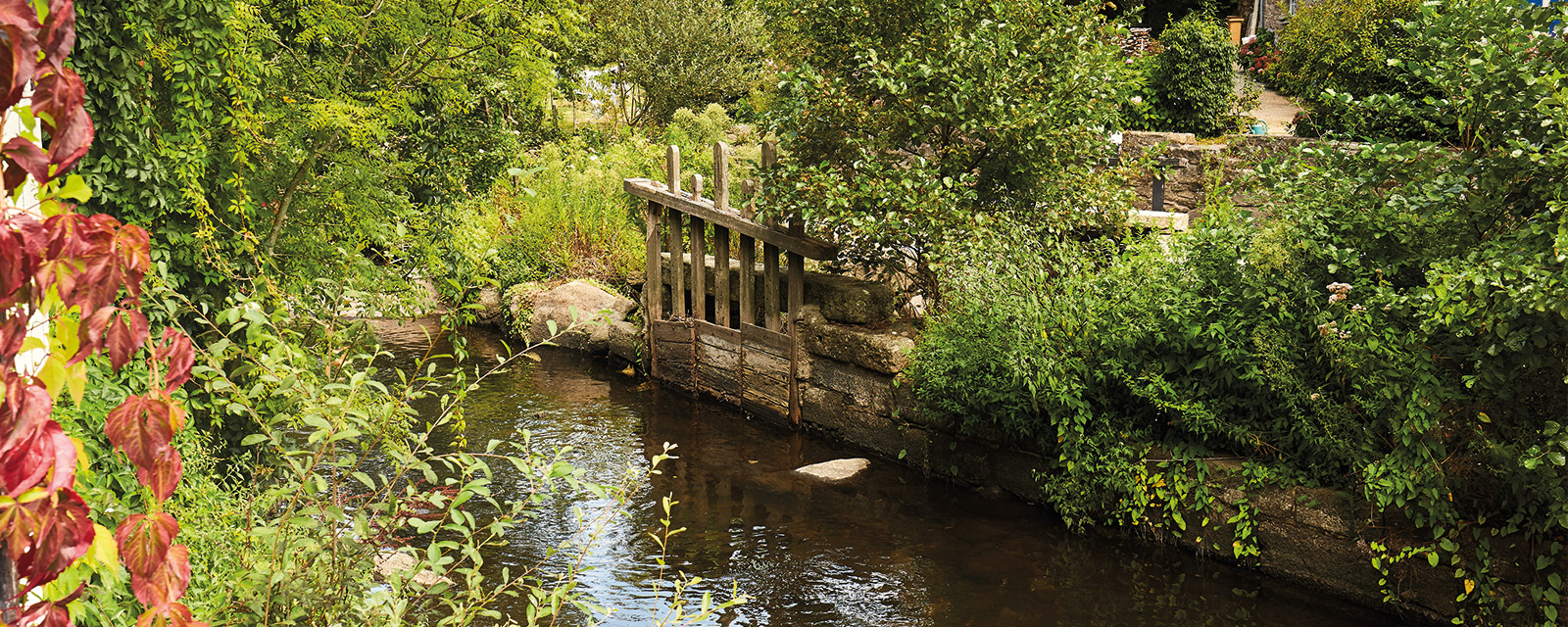
The mill of Kermentec (n°4)
Better known under the name of its former owner, the Moulin David was immortalised by Gauguin in 1894. It is located under the viaduct of the former railway line.
At first it was a paper mill and then a grain mill. It has also been painted by Daucho in 1943, painting which is now exhibited at the Museum of Pont-Aven.
The mill of Kerniguez (n°5)
It is located on the left bank of the Aven and also received water from another affluent: the Saint-Eloi.
The mill of the Petit Poulguin (n°6)
Located on the left bank of the Aven. In Breton “poul” means “whole” and “Guin” means “tumult”. It has been named this way because of its proximity to the Aven’s blockfields.
In 1888 Paul Gauguin painted “Les Dindons”there.
The mill of Pénanros (n°7)
Its name comes from the stream which rmerge with the Aven at that place: the Penanroz. It first belonged to the Abbey Saint Maurice and was later on bought by Yves Lollichon in 1791. This family still runs the flour factory of five floors which has been transformed in 1928. Since the revolution the family Dérout, who are the direct descendents of this great millers family perpetuate the tradition.
The production of flour is sold to the bakeries of the district and is also directly sold to individuals on the spot.
The mill of the Brunou sawmill (n°8)
Located in front of the medallion of Xavier Grall. You can still observe the axis of the wheel.
The mill of the Petite Tourte (the Little Pie) (n°9)
Between 1874 and 1875 the millwas used as a chapel while the church was being built. The mass was celebrated in the workshop and in an adjacent courtyard. One of the bells was hanged to a fig tree.
The mill of Poulhas (n°10)
In Breton it means “the duck pond” and the building is a bank nowadays. At the beginning of the XXth century it has been turned into a flour factory by its owners and worked at low tide thanks to its hydraulic wheel and a steam engine.
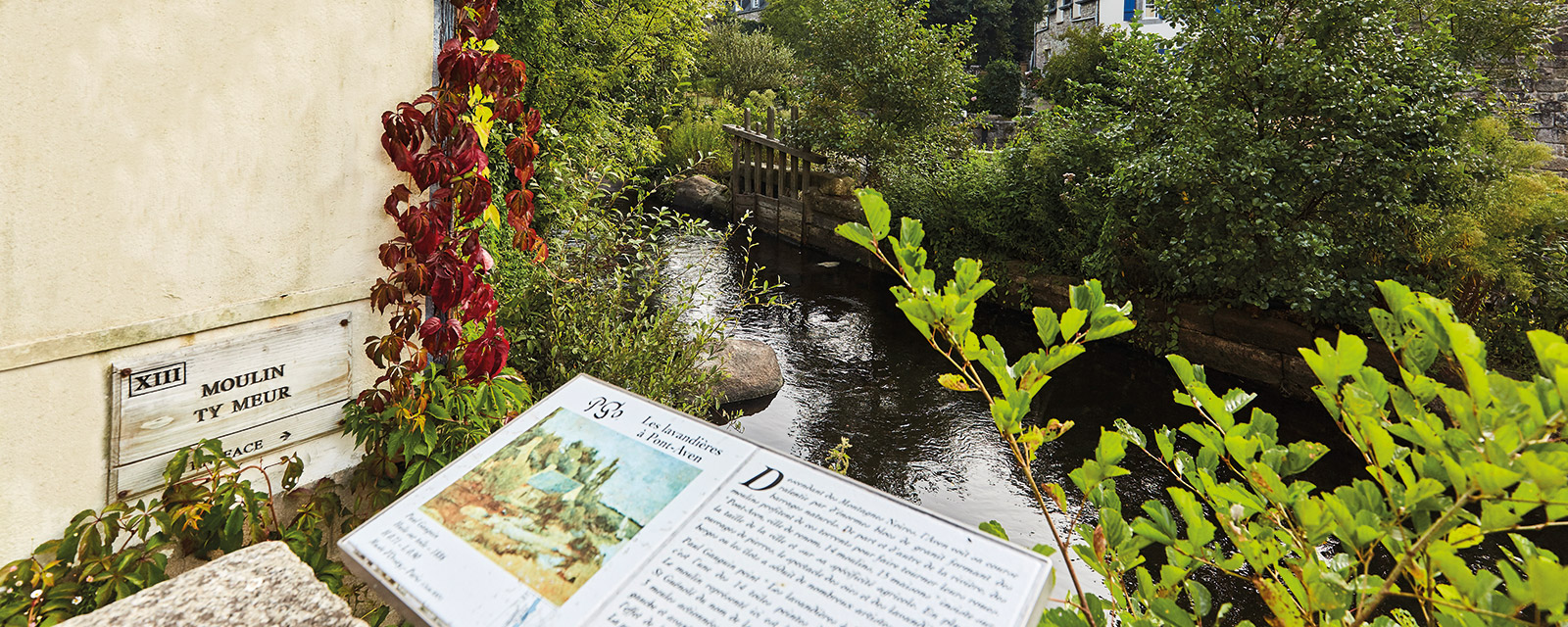
The mill of Rosmadec (n°11)
This mill dates back to the XVth century and, like many others, belonged to a castle: the castle of the marquis of Rosmadec. Its activity ceased in 1925. You can still see the two millstones inside of the restaurant.
The mill of the Porte Neuve (the New Door) (n°12)
It belonged to the Lord of the Hénan in Névez. It is also known as the “water mill of the Hénan” opposed to the tide mill which is located nearby the castle in Névez.
The sculptures on the edges of the roof can be surprising and might come from the Castle of Rustéphan which was already in ruins before the French Revolution.
The Ty Meur or St Guénolé mill (n°13)
Its names comes from the Breton: “ty” for “house” and “meur” for big” or from the overlooking hill of St Guénolé. In 1900 three millstones activated the three wheels.
It can be seen on the painting “The Lanvandières” created by Paul Gauguin in 1888.
The mill of the Grand Poulguin (n°14)
Poulguin comes from the Breton words “poul” for whole and “gwin” for wine (because the wine unloaded in the port was stocked there) or “guin” for “tumult” (because it was located closed to a blockfield).
Nowadays it is a restaurant where you can admire one of the millstones, the two wheels and sluice gates.
It was also the setting for the famous movie “Les galettes de Pont-Aven”.
